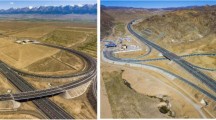Abstract
We have been researching on modeling of visual cognition and its application to content-based image retrieval. We started with analyzing the relationship between pre-attentive vision and attentive vision. And we focused on human early vision as pre-attentive vision. We selected statistical texture images as targets because attentive vision was hard to act them. Previously, many texture features have been proposed, but most of them were insufficient to account for human subjectivity. And so, we have newly designed texture features which were adequate to account for human subjectivity.
From the viewpoint of physiological fundamentals and psychological review, we have focused on the orientation feature and color feature of an image, and calculating contrast of these features in various resolutions. Next, we have measured psychological responses by using some descriptive adjectives, and corresponded them to our texture features by adopting the canonical correlation statistics. Based on this correspondence, we developed a contrast based subjective texture image retrieval (CBSTIR) system. Our system can retrieve images which give a similar impression, and also predict images by some descriptive adjectives. From the experimental results, we found that approximate color property was significant to subjective retrieval, while the precise color distribution was significant to non-subjective retrieval. Moreover, we found that the global orientation interaction in multi resolutions was significant to subjective retrieval.
Access this chapter
Tax calculation will be finalised at checkout
Purchases are for personal use only
Preview
Unable to display preview. Download preview PDF.
Similar content being viewed by others
References
T Kato, T. Sakamoto, Y. Kobayashi, “Mathematical model of lateral inhibition and light/dark adaptation mechanisms”, Technical Report of IEICE, PRMU96-72, 1996, pp. 33–40.
Y. Kobayashi, T. Kato, “A High Fidelity Contrast Improving Model Based on Human Vision Mechanisms”, Proc. of IEEE ICMCS’99, Vol. 2, June1999, pp. 578–584.
J.G. Daugman, “Uncertainty relation for resolution in space, spatial frequency, and orientation optimized by two-dimensional visual cortical filters”, J.Opt.Soc.Am.A, Vol. 2, No. 7, July 1985, pp. 1160–1169.
M. R. Turner, “Texture Discrimination by Gabor Functions”, Biol.Cybern., 55, Springer-verlag, 1986, pp. 71–82.
M. Unser, “Texture Classification and Segmentation Using Wavelet Frames”, Trans, on Image Processing, Vol. 4, No. 11, November 1995, pp. 1549–1560.
T.S. Lee, “Image Representation Using 2D Gabor Wavelets”, Trans, on Pattern Analysis and Machine Intelligence, Vol. 18, No. 10, October 1996, pp. 959–971.
F. Liu, W. Picard, “Periodicity,Directionality,and Randomness: Wold Features for Image Modeling and Retrieval”, Trans.on Pattern Analysis and Machine Intelligence, Vol. 18, No. 7, July 1996, pp. 722–733.
R.W. Conners, C. A.Harlow, “A Theoretical Comparison of Texture Algorithms”, Trans, on Pattern Analysis and Machine Intelligence, Vol. 2, No. 3, May 1980, pp. 204–222.
R. Chellappa, S. Chatterjee, “Classification of Textures Using Gaussian Markov Random Fields”, Trans, on Acoustics,Speech, and Signal Processing, Vol. 33, No. 4, August 1985.
B. Julesz, “Textons, the elements of texture perception and their interactions”, Nature, 290, 1981, pp. 1619–1645.
A. Treisman, S. Gormican, “Feature Analysis in Early Vision: Evidence From Search Asymmetries”, Psychological Review, Vol. 95, No.1, 1988, pp. 15–48.
M.S. Livingstone, D.H. Hubel,“Psychophysical evidence for separate channels for the perception of form, color, movement, and depth.”, Journal of Neuroscience, Vol. 7, No. 11, 1987,pp. 3416–3468.
N. Otsu, T. Kurita, “A New Scheme for Practical, Flexible and Intelligent Vision Systems”, Proc. of 11 th ICPR, 1992, pp. 213–216.
A.R. Rao, G.L. Lohse, “Identifying High Level Features of Texture Perception”, CVGff, Vol. 55, No. 3, 1993, pp. 218–233.
C.E. Osgood, G.J. Suci, P.H. Tannenbaum, The Measurement of Meaning, University of Illinois, Urbana, 1957.
T. Kurita, A Study on Applications of Statistical Methods to Flexible Information Processing”, Researches of the Electrotechnical Laboratory, Japan, 1993.
Author information
Authors and Affiliations
Editor information
Editors and Affiliations
Rights and permissions
Copyright information
© 2000 Springer-Verlag Berlin Heidelberg
About this paper
Cite this paper
Kobayashi, Y., Kato, T. (2000). Subjective Retrieval System for Texture Images Based on Interactions of Orientation and Color. In: Ibrahim, M., Küng, J., Revell, N. (eds) Database and Expert Systems Applications. DEXA 2000. Lecture Notes in Computer Science, vol 1873. Springer, Berlin, Heidelberg. https://doi.org/10.1007/3-540-44469-6_16
Download citation
DOI: https://doi.org/10.1007/3-540-44469-6_16
Published:
Publisher Name: Springer, Berlin, Heidelberg
Print ISBN: 978-3-540-67978-3
Online ISBN: 978-3-540-44469-5
eBook Packages: Springer Book Archive




